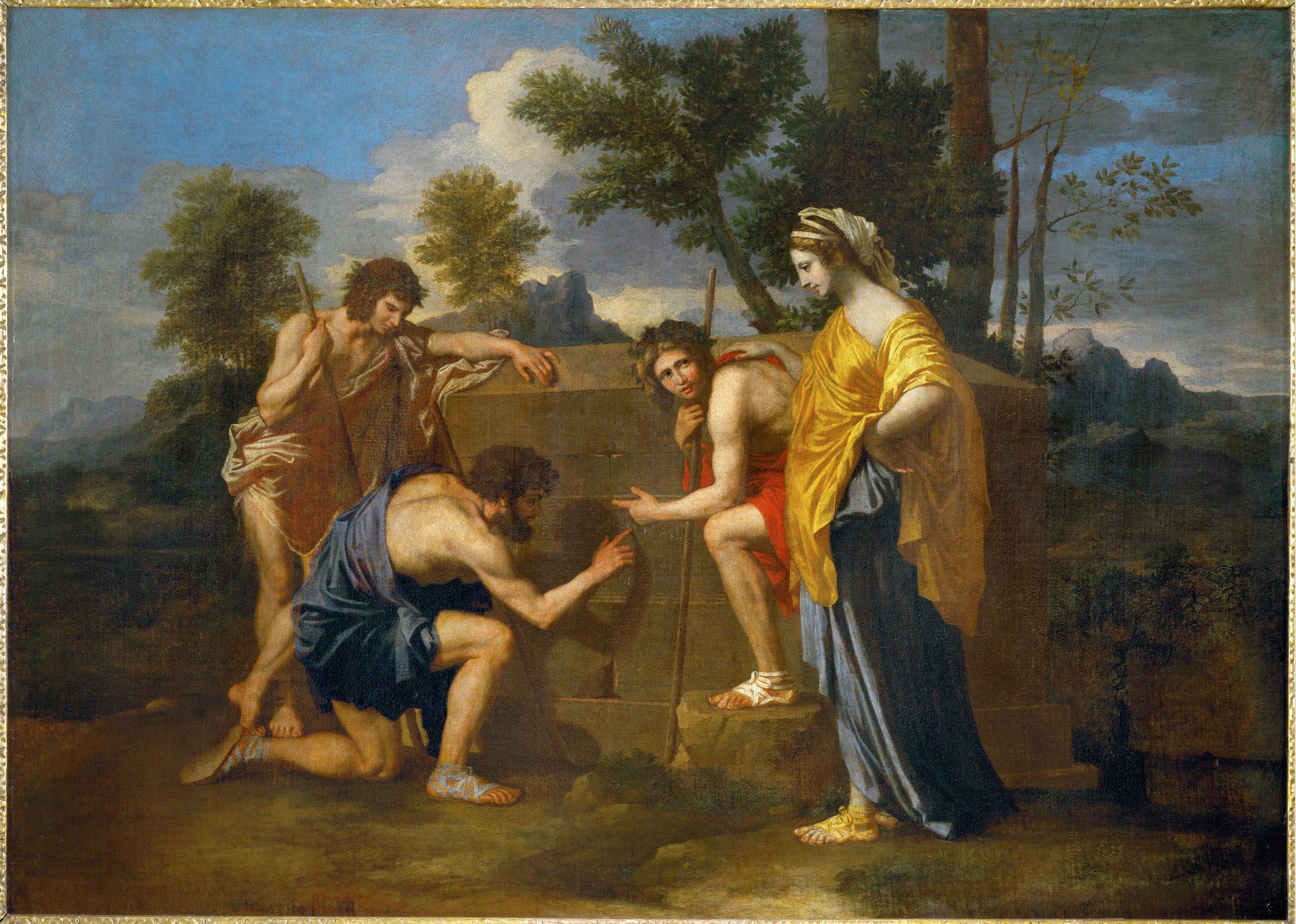There’s a Chinese proverb saying: “When a sage points at the moon, the fool looks at the finger.”
Today we are going to be those fools, in a way. Because pointed fingers are a clever tool used in art, for example to give direction to a composition - and that’s what we’re focusing on today.
The pointed finger can be used simply to point towards something inside the frame the artist wants to draw our attention to. As in Poussin’s “Et in arcadia ego” pictured above, for example, where the artist draws our attention to the inscription on the tomb as a memento mori.
Or they can point outside the frame, is in the famous “School of Athens” by Raphel, Here, Plato is pointing towards the heavens and Aristotle gestures towards the earth - presumable to illustrate the different focus in their philosophy.
The School of Athens, Raffaello_Sanzio_da_Urbino, Vatican Museums, rome
When the finger is pointing towards you, something extraordinary happens. All of a sudden, your are in a relationship to the work. You’re being singled out. You can really feel this - tension is heightened and it demands a reaction on your part.
In this surprisingly modern looking painting by Joseph Ducreux you feel ridiculed by the figure (a self-portrait of the painter) pointing at you.
Portrait de l'artiste sous les traits d'un moqueur, ca. 1793, Musée de la Révolution française
And pointing a finger towards the viewer was of course used very cleverly to recruit people for the army in both 1st and second world wars.
J. M. Flagg, 1917, based on the original British Lord Kitchener poster of three years earlier.
Today, be the fool that looks at - or for - the pointing fingers.
Browse through online art collections, like Google Arts & Culture or the brilliant Rijksstudio, and capture details of pointing fingers.
Observe how they’re used in compositions and share your finds on Twitter or Instagram, using the hashtag #kramerseye.



